


The Fascinating World Of Ancient Brewing

Brewing, one of humanity's oldest and most cherished traditions, has a rich and storied history that dates back thousands of years. The art of ancient brewing offers a captivating glimpse into the early origins of one of the world's favorite beverages, showcasing the resourcefulness and creativity of our ancestors.
The Birth Of Beer: The exact origins of brewing are shrouded in the mists of time, but evidence of early brewing practices can be traced back to ancient civilizations. The Sumerians of Mesopotamia, around 4000 BCE, are often credited with being the first known brewers. They brewed a beer-like beverage known as "kash," made from barley and emmer wheat, which they consumed as a staple of their diet.
Ancient Brewing Techniques: Ancient brewing techniques were considerably different from modern practices. The Sumerians and other early civilizations brewed beer using a process that involved baking and fermenting bread. They created a mixture of grains, water, and often honey, spices, and fruits, which was allowed to ferment naturally. The resulting beverage, more akin to a porridge than the beer we know today, was thick and consumed with a straw.
Brewing As A Cultural Ritual: In ancient societies, brewing held a special place in both religious and social contexts. Beer was often associated with various deities and played a vital role in religious rituals. In Egypt, for instance, beer was a part of offerings to the gods, while in Sumeria, it was seen as a gift from the goddess Ninkasi, who was not only the goddess of beer but also a symbol of the Sumerian way of life.
The Influence Of Ancient Brewing: The techniques developed by ancient civilizations have had a profound influence on brewing throughout history. The knowledge of fermenting grains, along with the discovery of hops in medieval Europe, led to the development of beer as we know it today. Ancient brewing traditions continue to inspire modern craft brewers who look to revive old recipes and ingredients to create unique and historically accurate brews.
Brewing In the Modern Age: Despite the vast differences between ancient brewing techniques and modern practices, there are some striking similarities. Both ancient and contemporary brewers share a fundamental understanding of the transformative power of yeast. Yeast, the microorganism responsible for fermentation, was a key component in ancient brewing and continues to be the cornerstone of brewing today.
Moreover, the reverence for beer as a social and cultural drink has endured through the ages. Just as in ancient times, beer today continues to bring people together, whether it's enjoying a pint at a local pub or brewing with friends in the comfort of one's home.
The history of ancient brewing is a testament to the enduring appeal of beer and the ingenuity of our ancestors. The techniques and traditions developed by ancient civilizations have laid the foundation for the complex and diverse world of brewing we know today. Exploring the roots of brewing is not only a delightful journey through time but also a celebration of the human love for creativity, innovation, and, of course, a well-crafted brew. Cheers to the enduring legacy of ancient brewing!




An Artistic Masterpiece In Thread
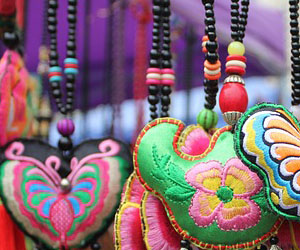 Versatility In Design: One of the satin stitch's most appealing features is its versatility. It can be used to create a wide range of designs, from simple geometric shapes to intricate, lifelike images. Whether you are working on floral motifs, animal figures, or abstract patterns, the satin stitch allows for artistic expression in various forms.
Versatility In Design: One of the satin stitch's most appealing features is its versatility. It can be used to create a wide range of designs, from simple geometric shapes to intricate, lifelike images. Whether you are working on floral motifs, animal figures, or abstract patterns, the satin stitch allows for artistic expression in various forms.
Achieving Dimension And Texture: While the satin stitch is celebrated for its smoothness, it also has the potential to add dimension and texture to embroidery projects.
The Artistry In Every Stitch
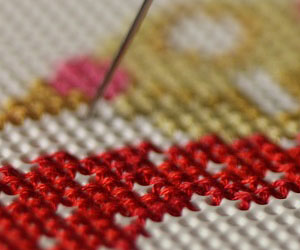 Quilting: Quilting is a technique that marries practicality and artistry. Quilts are made by stitching layers of fabric together, often with intricate patterns. Traditional quilt designs tell stories and are passed down through generations. Quilting stitches can be simple or highly detailed, adding depth and warmth to these cherished heirlooms.
Quilting: Quilting is a technique that marries practicality and artistry. Quilts are made by stitching layers of fabric together, often with intricate patterns. Traditional quilt designs tell stories and are passed down through generations. Quilting stitches can be simple or highly detailed, adding depth and warmth to these cherished heirlooms.
Cross-Stitch: Cross-stitch is known for its precise, grid-based patterns created by "X" stitches. It is a popular choice for decorative items like samplers and personalized gifts. The process is meditative, requiring attention to detail and precision in every stitch.
Appliqué: Appliqué is the art of attaching smaller pieces of fabric onto a larger base to create images, patterns, or designs. This technique can be found in quilting, clothing, and decorative textiles. Appliqué often involves intricate stitching to secure the fabric pieces and add embellishments.
Thread Painting: Thread painting is a technique that mimics the strokes of a painter's brush with colored threads. Artists use varying thread densities and colors to create detailed images on fabric. The result is a stunning visual masterpiece.
Crafting Beauty And Functionality
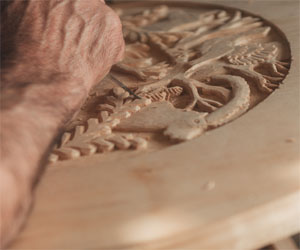 From Functional To Decorative: Creating with wood spans a broad spectrum, from crafting functional items such as furniture, cabinetry, and household objects, to carving intricate sculptures and decorative art pieces. This diversity allows artists to express their creativity across a wide range of styles and purposes.
From Functional To Decorative: Creating with wood spans a broad spectrum, from crafting functional items such as furniture, cabinetry, and household objects, to carving intricate sculptures and decorative art pieces. This diversity allows artists to express their creativity across a wide range of styles and purposes.
Traditional Techniques And Modern Innovations: The art of creating with wood combines traditional techniques handed down through generations with contemporary innovations. Woodworkers may employ age-old joinery methods like dovetails and mortise and tenon, while also using modern power tools for efficiency. This harmonious blend of old and new techniques gives rise to a rich tapestry of creations.
The Joy Of Craftsmanship: Woodworking, in particular, is a craft that places great emphasis on craftsmanship. It demands precision, attention to detail, and an unwavering commitment to quality. Whether it's shaping a piece of wood with hand tools or operating sophisticated machinery, the satisfaction of creating something with one's own hands is immeasurable.
Functional Beauty: One of the most remarkable aspects of creating with wood is the fusion of beauty and functionality. Woodworking, for instance, produces items that serve practical purposes while also being aesthetically pleasing. Chairs are designed for comfort, tables for stability, and cabinets for storage, but each is also a piece of art that enhances living spaces.
Sculpting Emotions: Artistic creations with wood go beyond the functional. Wood carvers, for instance, transform raw timber into intricate sculptures that convey a wide range of emotions. From serene and serene figures to dynamic, abstract forms, wood allows artists to sculpt their feelings and experiences into tangible art.
Sustainable And Earth-Friendly: Working with wood is often synonymous with sustainability. Responsible sourcing of timber, coupled with the durability and recyclability of wooden items, makes it an eco-friendly choice.
Homemade Candle Recipes For DIY Enthusiasts
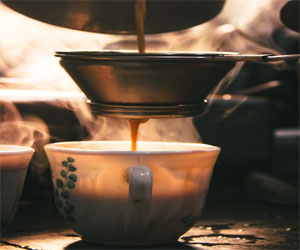 Materials:
Materials:
Wax (multiple colors for layering)
Wick
Fragrance oils (various scents)
Candle dye (multiple colors)
Heat-resistant container
Double boiler or microwave-safe bowl
Steps:
Prepare the container and wick as in the basic container candle recipe.
Melt each color of wax separately, adding specific fragrances and dyes.
Pour the first layer of wax into the container, allowing it to cool and solidify.
Repeat this process with different colors and scents, creating layered bands of wax.
Let the candle cool completely, trim the wick, and enjoy the fragrance and beautiful layers.
3. Upcycled Teacup Candle Recipe:
Materials:
Old teacup or small container
Wax
Wick
Fragrance oil (optional)
Candle dye (optional)
Double boiler or microwave-safe bowl
Steps:
Clean and dry the teacup or container.
Secure the wick at the center of the teacup.
Crafting Innovation In A Glass
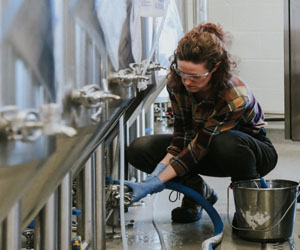 The Rise Of The Microbrewery: The microbrewery movement gained momentum in the late 20th century as a response to the dominance of large, corporate breweries. These passionate and entrepreneurial brewers sought to reintroduce diversity and flavor into a beer market that had become inundated with mass-produced, homogenized brews.
The Rise Of The Microbrewery: The microbrewery movement gained momentum in the late 20th century as a response to the dominance of large, corporate breweries. These passionate and entrepreneurial brewers sought to reintroduce diversity and flavor into a beer market that had become inundated with mass-produced, homogenized brews.
Independent Spirit And Innovation: Microbreweries thrive on their independent spirit. They are often born out of a brewer's desire to experiment, push boundaries, and craft beers that are unique and distinct. This spirit of innovation has led to a remarkable range of beer styles and flavor profiles that cater to every taste preference. From hoppy IPAs to rich stouts and sours, microbreweries offer a diverse array of options for beer enthusiasts.
Craftsmanship And Quality: One of the cornerstones of microbreweries is their unwavering commitment to quality. Brewmasters at these small establishments are deeply involved in every step of the brewing process, from selecting the finest ingredients to meticulously monitoring each batch. The focus on craftsmanship ensures that the beer produced is of the highest quality.
Community And Local Engagement: Microbreweries are not just places to brew and enjoy beer; they often serve as community hubs. Local microbreweries foster a sense of belonging, with patrons frequently interacting with brewers, learning about the brewing process, and enjoying unique, small-batch brews. They often feature taprooms, events, and tours, providing a social space where beer lovers can come together and celebrate their passion.
Economic Impact: In addition to providing a gathering place for communities, microbreweries contribute significantly to the local economy. They create jobs, source ingredients locally when possible, and attract tourists to the area. The craft beer industry has also led to the growth of related businesses, such as craft beer bars, restaurants, and beer tourism.
The Art And Science Of Brewing
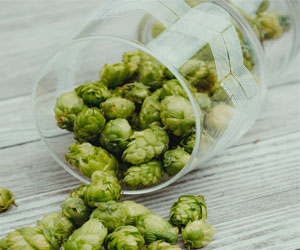 Another crucial aspect of beer craftsmanship is quality control. Craftsmen continually monitor their brews throughout the fermentation and conditioning stages, ensuring consistency and flavor stability. They understand that a small deviation in the brewing process can result in a vastly different beer, and maintaining the intended flavor profile is paramount.
Another crucial aspect of beer craftsmanship is quality control. Craftsmen continually monitor their brews throughout the fermentation and conditioning stages, ensuring consistency and flavor stability. They understand that a small deviation in the brewing process can result in a vastly different beer, and maintaining the intended flavor profile is paramount.
In the craft beer movement, beer craftsmanship goes beyond the brewing process. It extends to branding, marketing, and presentation. Craft breweries often take pride in unique packaging, labels, and taproom aesthetics, offering consumers a complete sensory experience that complements the liquid inside the bottle or glass.
Craftsmen also embrace innovation. They experiment with new ingredients, techniques, and styles, pushing the boundaries of what beer can be. This spirit of innovation has led to the creation of entirely new beer categories, such as sour ales and fruit-infused brews, expanding the palate of beer lovers.
Beer craftsmanship is a blend of tradition, science, and artistry that elevates brewing from a mere beverage production to a true craft. The dedication to sourcing the finest ingredients, the mastery of brewing techniques, and the passion for creating exceptional flavors are all facets of the craftsmanship that defines the world of beer. Whether it's a small, family-run brewery or a larger craft beer producer, the commitment to quality and the pursuit of excellence is the common thread that unites all beer craftsmen.
Nurturing Your Inner Glow
 Nourishing From Within
Nourishing From Within
The skin is often considered a mirror of one's overall health, and health-conscious beauty acknowledges this fact. Consuming a balanced diet rich in vitamins, minerals, and antioxidants provides the essential building blocks for healthy skin and hair. Nutrient-dense foods, such as leafy greens, colorful fruits, and omega-3-rich fish, can contribute to a radiant complexion and lustrous locks.
Hydration is another cornerstone of health-conscious beauty. Proper hydration not only keeps the skin plump and glowing but also supports the body's natural detoxification processes. Drinking an adequate amount of water, along with herbal teas and hydrating foods, can help maintain skin's elasticity and clarity.
Clean And Mindful Skincare
While external beauty products aren't shunned in health-conscious beauty, the focus is on clean and mindful skincare choices. Avoiding products containing harmful chemicals and opting for natural or organic alternatives is essential. These choices help protect not only the skin but also the environment.
Consistent skincare routines, tailored to individual skin types and concerns, are also encouraged. These routines may incorporate natural ingredients such as aloe vera, tea tree oil, and chamomile for their soothing and healing properties. By being mindful of the ingredients in their beauty products, health-conscious beauty enthusiasts ensure that they are only putting the best on their skin.
Exploring The World Of Embroidery Stitches
 French Knot: A highly decorative stitch that creates raised, textured dots. These knots can be used for flowers, eyes, or other small, ornamental details.
French Knot: A highly decorative stitch that creates raised, textured dots. These knots can be used for flowers, eyes, or other small, ornamental details.
Chain Stitch: A looping stitch that forms a chain-like line. It's versatile and can be used for both lines and filling areas, creating a textured, rope-like appearance.
Feather Stitch: This stitch resembles the delicate fronds of a feather, with stitches on either side of a central line. It is often used to depict leaves, vines, or other organic elements.
Bullion Knot: A stitch that creates a raised, coiled effect. It's perfect for floral and three-dimensional embroidery work, adding depth and dimension.
Embroidery In Culture And Tradition: Regional Stitches
Different cultures around the world have their unique embroidery stitches and styles, often reflecting the traditions, values, and artistic sensibilities of their communities.
Sashiko (Japan): Known for its geometric, repetitive patterns, sashiko uses running stitches to create designs that are both decorative and functional. It's often used for mending and reinforcing fabric.
Crewelwork (England): This traditional embroidery style employs wool threads and intricate stitches to create detailed designs, often depicting pastoral scenes and floral motifs.